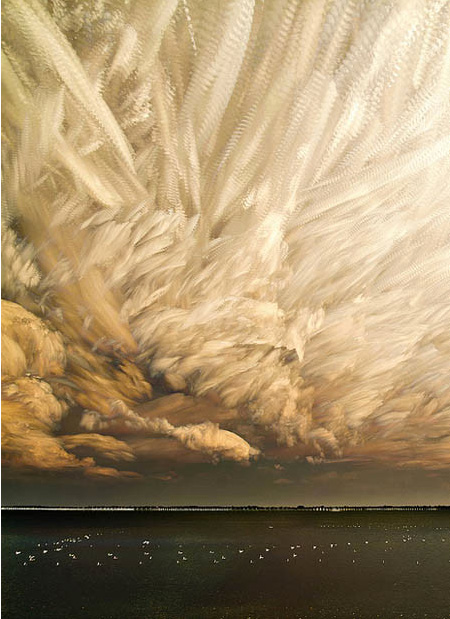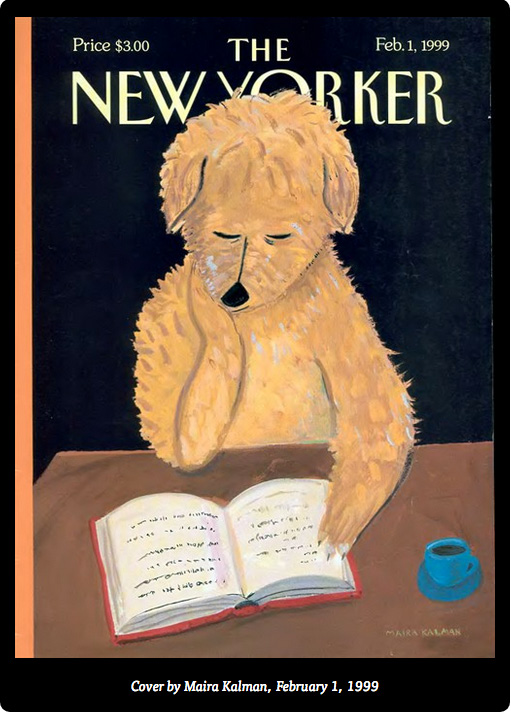11 November 2012
Safari Story: Serengeti Flooded
17/11/12 16:01 Filed in: Travel & Inspiration | Safari Story

It was November 2006 and the time of the short rains in Tanzania, normally not the time photographers want to visit the Serengeti, but I thought it would be great to see the savannah during rains and to shoot with the soft light.
At arrival in Arusha it was announced that our safari flight to Klein’s Camp in the Northern Serengeti would have a delay and would not be able to land at Klein’s. There had been too much rain and the airstrip’s soil was to soft for a plane to land. After a while a solution was found. We would fly to Seronera in the middle of the Serengeti and from there carry on by 4x4.
During our flight over the Serengeti we got a pretty good impression what was going on. The Grumeti River was full and the plains were flooded. The often-dry Great Plains were wetlands. From Seronera airstrip we carried on in our 4x4 Landcruiser, heading north towards the Kenyan border where Klein’s Camp is situated. The road we were driving on was still all right, although we had to be careful with the patches of black cotton soil, a tricky soil that looks dry and the moment you drive on it, its like driving on wet soap. After driving for a while we got a call via the radio that another vehicle from Klein’s got stuck and if we could help pulling them out. Their position was quite close and we headed to them to help. The vehicle had dug itself deeply into the black cotton soil and we had to be very carefully to not get stuck as well. The guests were standing next to the vehicle with a desperate look in their eyes, but it was soon clear that we couldn’t pull them out. We would get stuck too. So all the guests got in our vehicle and we carried on. The guys would find a solution for the vehicle later, at least the guests were off the road and on-route back to the camp.
In order to get to Klein’s Camp one has to cross the river. When we arrived at the river it was clear that we wouldn’t be able to drive through it, definitely not with all the people on it. We had to drive to a little pedestrian bridge, get out and walk with our luggage over the tiny bridge to reach the vehicle that was waiting for us on the other side. Masai people were awaiting us on the other side, dressed traditionally and with spear and with a big UMBRELLA! It was such a funny sight to see the brave Masai warriors with an umbrella to shelter from the rain.
Well, we finally arrived at the camp and our driver proved to be brave and a good driver as well. He drove through river with the empty vehicle and everything was fine.
We were the last guests arriving at Klein’s Camp for several months. They closed the camp after we had left. The short rains turned out to be very long rains and the camp was only reopened in August of the following year. Nature has always the last word, not matter what humans want.
Ute Sonnenberg for www.rohoyachui.com
How to Photograph like Francis Bacon Painted
16/11/12 09:41 Filed in: Photography & Art

Bullfight by Francis Bacon
What do you see when looking at a Francis Bacon painting? Essence.
Yes, there is still recognizable shape, yet no disturbing details. The subject’s essence is captured in the painting and without seeing the bullfighter’s face we know it’s the bullfighter. The painting is condensed essence and when looking at it we can feel the energy between the man and the animal, the power of the moment the tension, the fear.
How can a photographer paint like Bacon? By daring to shoot away and simply following the energy of the moment.
Imagine a horse race. The horses are coming with such a speed that there is no time to think at all. You got to shoot away, just follow with your camera the energy of the racing horses and you will get the most amazing photographs. You will feel the energy and there is no choice, it lasts only for seconds, so just let go and shoot. The horses are faster than you and the camera, so probably most of the image will be blur, but the essence will be in focus and the blur rest of the image shows the dynamic of the moment. The viewer will feel it, just like in a painting from Bacon.
Dare!
Ute Sonnenberg for www.rohoyachui.com
Romance: Karen Blixen & Peter Beard
15/11/12 11:02 Filed in: Photography & Art

Do not jump to conclusions, romance is not an intimate relationship, romance is a strong connection sometimes people have, like mothers with children, siblings, soul mates or like we sometimes call them “like minded people” or rather “like hearted people”.
Peter Beard visited Karen Blixen at her home in Denmark. This was in the early 60ies and Beard was at that time a young man who had just started exploring East Africa and had been very much drawn into Blixen’s book “Out of Africa”. Well, a lady from Blixen’s household said that he seems to remember Karen Blixen of her big love Denys Finch Hatton, yet the connection the two was most likely the love and fascination for Africa.
Beard took some great photographs of Karen Blixen and probably even the last one ever taken of her, she died in 1962. Quotes from Out of Africa are on many of Beard’s photographs and it seems that they saw Africa the same way, had the same connection with the continent and its people and wildlife, shared the same fascination and loved it deeply. What Blixen was saying with words, Beard was saying with photographs and Blixen’s words on Beard’s photographs are an overwhelming combination.
Find a selection of Peter Beard’s work on his website or in the book Peter Beard Trade Edition or get in the car and drive to Arles in the Camargue in Southern France. Hotel Nord Pinus in Arles has an impressing small collection of original Peter Beard photographs, including a Karen Blixen portrait.
What fascinations are you sharing? Even thought to capture them in photographs?
Ute Sonnenberg for www.rohoyachui.com
photo above: Peter Beard photo of Karen Blixen, shown at Hotel Nord Pinus in Arles
Refreshed Nikon DSLR Range
14/11/12 11:16 Filed in: Photography & Art

This year Nikon did quite a revolutionary refresh of its DSLR line with the release of the flagship camera D4 and the high-megapixel cameras D800 and D800E, leaving some professionals with the dilemma to choose between the two of them.
But it seems that they are not done yet. Nikon Rumors reports that within a few weeks the new D5200 will be announced. This camera will replace the D5100 as a mid-range DSLR for consumers and enthusiasts.
In case its getting a bit confusing with all the different cameras, here a chart with the Nikon DSLRs for a better orientation. (via PetaPixel).

Will this be the last announcement of a new camera for a while? Sometimes big companies breath in for a few years and then breath out also for a few years, meaning it takes a while to develop new products and then release them in a big wave.
Lets see what comes next, maybe a few new lenses?
Ute Sonnenberg for www.rohoyachui.com
Striking Photo Stacking Technique
13/11/12 13:27 Filed in: Photography & Art

There are many ways of painting with your camera and there are probably even more ways of painting with Photoshop, but this one is really a nice one.
Matt Molloy’s photo stacking technique cloud images look just amazing, like big rough brush strokes have set the clouds on the pictures.
Here is how Molloy does it:
“To make these ‘photo stacks’, I first shoot a timelapse, taking a photo every 5 seconds or so. (Settings differ depending on the subject and lighting conditions). I then merge several photos into one image using Photoshop. I start with the first image from the timelapse as a normal photo and then blend the rest of them with the ‘lighten’ blending mode. This only adds things that are brighter than what was in the first photo, and so you can see things like the paths of stars as they move across the sky. (The movement of the stars is actually from the earth’s rotation).”
It sounds like a lot of work, but it looks like being worth trying.

Find more of his work can be found on Flickr and 500px and good luck with playing with light.
Happy brush stroke setting!
Ute Sonnenberg for www.rohoyachui.com
The New Yorker's Wild Dogs
12/11/12 15:39 Filed in: Photography & Art

There seems to be no place in the world without dogs. Even in the bush everything is dropped when wild dogs are spotted and the game vehicles race to the sighting. They are so rarely seen and they are endangered in many areas, that seeing them is a very exciting experience.
Spotting dogs in big cities is not quite a rare sighting and dogs in general are an essential part of our lives. They seem to help us with all sorts of things, even with writing. The New Yorker just released the The Big New Yorker Book of Dogs by Maria Popova with dog themed pieces of literature. Interested? Be careful, its about dogs and only about dogs, as Malcolm Gladwell says in the foreword:
“A few words about you. You bought this book: several hundred pages on dogs. You are, in other words, as unhealthily involved in the emotional life of dogs as the rest of us. Have you wondered why you bought it? One possible answer is that you see the subject of man’s affection for dogs as a way of examining all sorts of broader issues. Is it the case of a simple thing revealing a great many complex truths? We do a lot of this at The New Yorker. To be honest: I do a lot of this at The New Yorker — always going on and on about how A is just a metaphor for B, and blah, blah, blah. But let’s be clear. You didn’t really buy this boo because of some grand metaphor. Dogs are not about something else. Dogs are about dogs.”

Well, I think dogs are more than dogs, even in the bush and the excitement of so many savvy bush people and guests can’t be wrong, they are something special. When you see a pack of wild dogs on the go, how they interact and how they hunt, it’s really something special.
Keep being inspired by dogs and photograph every now and then your own dog. They are great subjects for awesome photography.
Ute Sonnenberg for www.rohoyachui.com
Travel Memories 2008: On Safari in Africa - Day 11
11/11/12 15:42 Filed in: Travel & Inspiration

I obviously needed it so much, a relaxed day at Lewa Downs with a nice and dry room, a shower and everything just working. So, happily I went out on the game drive with my guide form Lewa and it was really fun. He made a Swahili lesson from the game drive and it was lovely.
Twende …Let’s go. My guide Joel was serious about teaching me Swahili. We started cruising on Lewa in the morning twilight when the rolling hills of Lewa are bluish and mysterious, an awesome light for magical shots. All together it was a very nice day and we saw twiga…giraffe, punda…zebra and pumba mingi … many warthogs and eventually simba … lion with ntoto ya simba … lion cubs.
Learned some Swahili now?
Lala Salama… Sleep well.
Ute Sonnenberg for www.rohoyachui.com